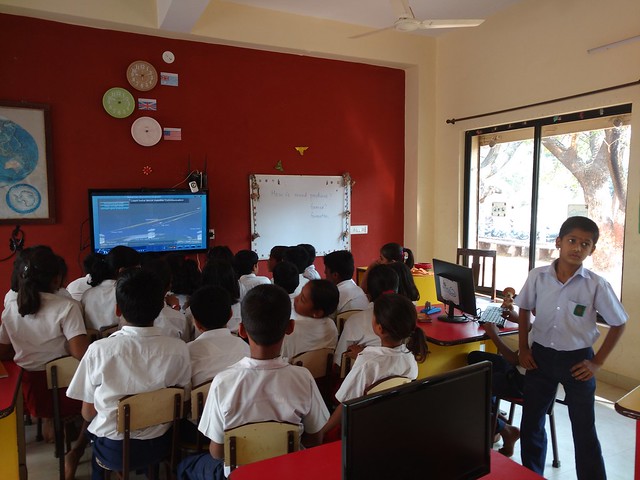How Story Time Is Making Learning Fun for 30,000 Students in Maharashtra’s Govt Schools
Posted by Remya Padmadas on June 19, 2017In the hilly terrains of Phaltan, Satara district, Maharashtra a movement to seed the joy of reading in classrooms is being quietly seeded in 150 Zilla Parishad schools.
Pragat Shikshan Sanstha is an educational enterprise that supports schools, teachers and children in the district of Phaltan and other nearby areas. The organisation works with students through their own flagship school and after school programmes, and also trains teachers in good educational practices in government schools. By engaging researchers, government officials and the general public in an ongoing dialogue Pragat Shikshan Sanstha hopes to positively impact the education ecosystem.
“We are trying to impact the educational ecosystem by changing the image of ‘the child’ and ‘the teacher’ through excellent classroom practices, sound pedagogies, elements of classroom research and education for equality.” Manjiri Nimbkar, Secretary, Pragat Shikshan Sanstha.
Drop Everything and Read
One of Pragat Shikshan Sanstha’s areas of focus is setting up more libraries in the region. This, they felt was something that would not only benefit the schools in the area but also children from other nearby communities. The organisation felt that it was imperative to make books and read aloud sessions a part of their training offering to teachers. The idea was to get more teachers to use more books in their classrooms and libraries through read alouds and storytelling sessions.
Reading in so important in early childhood as books can free a child, and give them the opportunity to think and imagine. By helping children express themselves in varied ways, books encourage them to understand and empathise with the lives and experiences of those who are marginalised.
Pragat Shikshan Sanstha came across StoryWeaver - a digital repository of multilingual stories for children from Pratham Books and in it, discovered a source of stories in Marathi, the language of the region. All content on StoryWeaver is openly licensed under CC-BY4.0 and can be read, translated, downloaded, printed and shared for free. Through StoryWeaver, the organisation has access to many joyful stories in Marathi but without having to heavily invest in buying books regularly.
It’s story time!
Pragat Shikshan Sanstha curated a list of stories, in different levels across a variety of themes and topics and circulated it amongst the teachers who were being trained in using storytelling as a medium for language development.
These teachers also double up as librarians! The teachers choose from the circulated list the stories they think will work best for their students, downloaded them as per their class’s requirement and conduct read aloud sessions. Each library is equipped with a tablet and a projector which the teachers use to project stories off StoryWeaver. They also conduct various activities - art & craft, book reviews, games, skits etc around the books to help extend learning.
Pratham Books was fortunate to watch one of these wonderful sessions at a Zilla Parishad schools in the region. The classroom was equipped with a projector donated by a local badminton association and some computers (in working condition) from a corporate.
Bohra Bai, who teaches grades 2 and 3 in the school, first did a little warm up with the children before asking them to sit down. The story she had chosen that day was ‘Sam’s Christmas Present’ by Annie Besant and Alicia D’Souza in Marathi. Bohra Bai started from the cover page and urged the children to note everything that was there on the cover and predict what could the book be about. She got them to make connections, relate it to their own lives and pointed out sight words. Basically, everything you would expect a good teacher to do with a good book.
“We have regular sessions with teachers on how good read alouds are done, what are the different activities one can do with the books and the teachers value these training.”
When we took Bohra Bai aside to ask her a few question, young Diksha took over and continued to read the story aloud to her classmates, and did a tremendous job of it!
“Storybooks with illustrations help children imagine and understand better, along with learning about new cultures or things they don't see otherwise. For example with this book Sam's Christmas Present, they got to know about the festival of Christmas or the food that is eaten during Christmas as children from villages have never seen or eaten things like that.” shared Bohra Bai.
When asked about using technology in the classroom, she had this to say: “Projecting stories help catch children's attention better because this is new for them. Its interesting because it looks like TV to them.”
Stories can be an excellent tool in the classroom, an idea Bohra Bai strongly agrees with! “Stories really help children expand their vocabulary. For example, they get to know options of words in proper language that they use otherwise in their day to day lives, in dialects of that language. This really helps language development.”
A total of 150 Government schools in the Phaltan district have libraries & digital set up from PSS. About 30000 children from Grades 2 to 7, get to listen, read and enjoy stories in Marathi and Hindi.
“Going forward we hope to create more books for children with imaginative illustrations and help people understand the importance of illustrations. Create literature to help children understand and tackle issues and problems. Encourage children’s own creative writing.”
Be the first to comment.StoryWeaver Visits Hyderabad!
Posted by Sherein Bansal on June 08, 2017My first StoryWeaver workshop took me to Hyderabad. I was officially on the training side of the workshop, but since this was my first, I experienced those two days with two different batches as a participant too.
50+ educators, resource people, librarians and program managers from 12 different organisations and schools poured into the room and were brimming with energy even before the workshop began. Payoshni, Senior Outreach Manager and trainer for the workshop, talked about StoryWeaver - our open repository of free children’s books, its practical uses in a classroom, and the way it can be used to enhance a child’s world from all aspects like cognitive approach, social skills, comprehension, logical thinking and aesthetics.
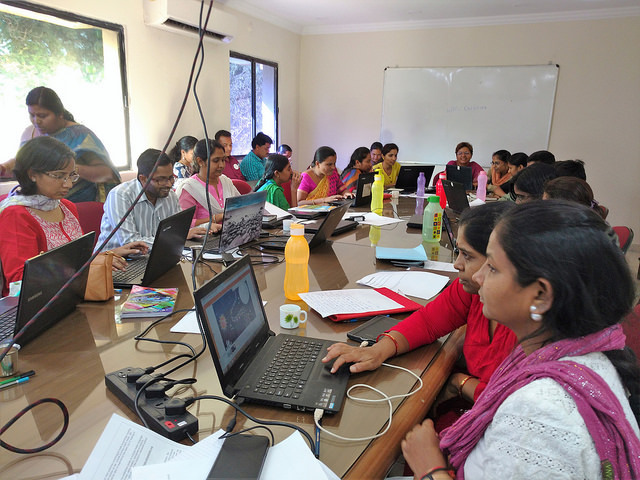
Teachers became curious students and asked us countless questions that spanned across queries about our features, to the efficacy of the platform itself. It was a delight to see them realize the applications of StoryWeaver in the classroom. Once they understood the intricacies of creating, translating or releveling (simplifying or making a story complex) stories on the platform, all of them were eager to try their hand at bringing about their own creation on StoryWeaver.
Sandhya Damodar, Pudami Schools, Hyderabad talks here about the various applications of StoryWeaver in a classroom and specifically the advantages of being able to ‘relevel’ stories:
The fact that the stories on StoryWeaver are free to use, read, download and print was exciting and important for teachers who came from schools based in rural settings. Active discussions ranged from how to preserve the accuracy and sanctity of a language through translations. Concerns unfolded about how some languages need more original content for the children, and one way could be to create and translate in that language on platforms like StoryWeaver.
In this short video, workshop participant Shadab Ahmad, Focus High School, Hyderabad talks about how StoryWeaver will help him in getting Urdu stories across to his students and also about the ease of publishing good stories on the platform.
The childlike joy of the teachers working in teams with fellow educators whom they didn’t know previously, and raising their hands to read their created stories out loud was infectious. They proudly presented their work in front of everyone and laughed along with everyone at the bits they got wrong or where they themselves had added humor! Some of them are still active on the platform and creating/translating/releveling stories for their students, for fun, or to contribute in some way to their favorite language.
As we wrapped up the two-day workshop, it was a comfort to know there are educators who are eager to learn about how to improve a child’s experience in classrooms. And not just that, they want to do it through the art of stories.
Here are a few pictures from the event!
A big thank you to Dr.Reddy’s Foundation who made this wonderful workshop possible and all their efforts in bringing the best opportunities to their children. If you are interested in hosting a similar workshop for your organisation, drop us an email on [email protected].
STEM Books: What (We Think) Works
Posted by Yamini Vijayan on May 11, 2017Since its inception, Pratham Books has published a range of picture books that explore STEM (Science, Technology, Engineering and Math) topics in interesting ways. But it is since 2015 that we have been doing this in a much more focussed manner. The main reason for this was the realization that there aren’t enough multilingual information books available for early readers in India. The fact that many children find science and math slightly daunting made this even more of an interesting challenge because we felt that we could help change this perception by creating fun, memorable books around STEM topics.
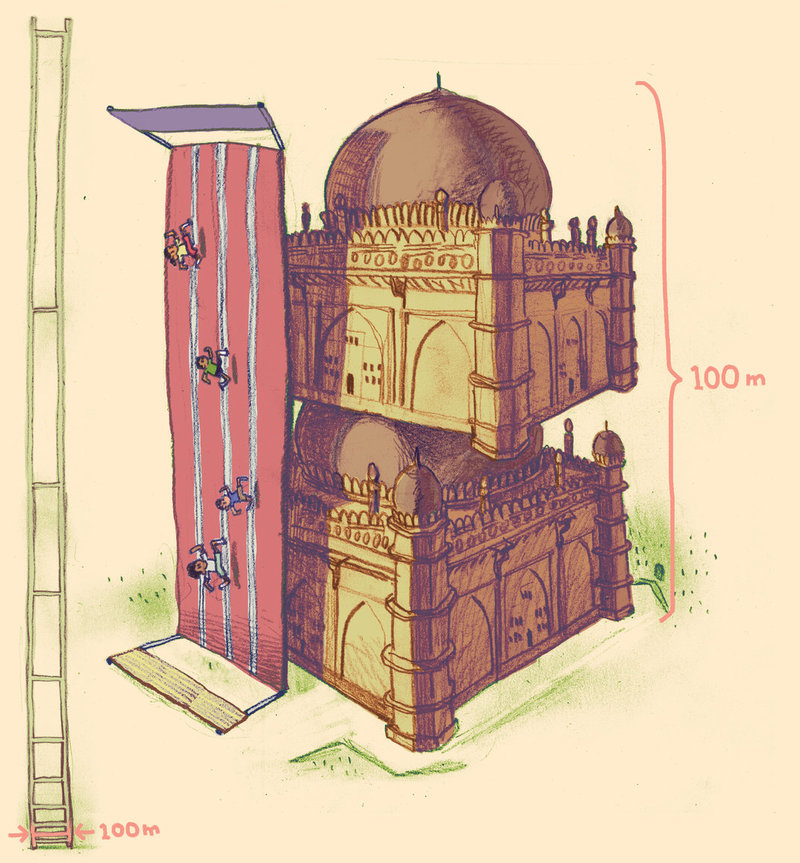
While we've been exploring a number of ways to introduce STEM topics to children, one of the biggest challenges has been to present information accurately, imaginatively and in a simple way without making it seem 'textbookish'. So it was essential that we paid attention to the narrative, plot and tone of each book so that children are drawn to it.
Since we work extensively with children from economically disadvantaged backgrounds, it is important that our books are relevant to these children. Conversations with partner organizations who work closely with these children reveal the need for simpler books as their reading fluencies are still developing. Bearing that in mind, our focus has been on creating simple books that encourage children to explore the world around them with an open mind, ask as many questions as they possibly can and find ways to apply their knowledge.
We continue to be keen to create STEM books, so we thought it might be interesting to highlight a few books that were created over the last couple of years, mainly as a way for us to reflect and share our learnings. So what worked?
Clarity of concept – An important aspect of a STEM book is its ability to demonstrate the concept clearly. I Spy! (by Samvida Venkatesh & Sandhya Prabhat) explains the concept of subtraction wonderfully - using play and humour.
Simplicity – Most of our conversations with our outreach partners lead us to the same conclusion: the need for simpler books that match the reading levels of the children we work with. Sunando Chakraborty’s Sniffles, a story about how flu spreads, is an excellent example of this. Also, we adore the central character of this book. Satya, Watch Out! is another good example of simplicity of narrative and plot.
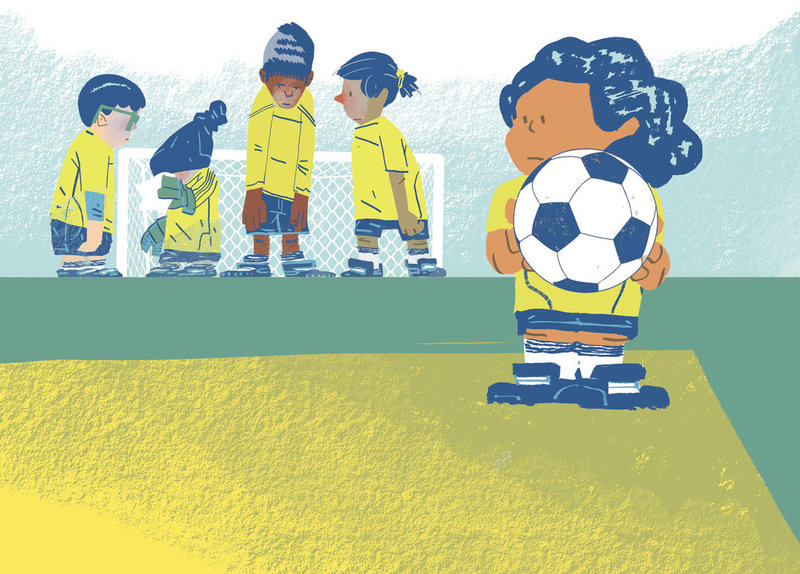
Good storytelling – Jadav and the Tree-Place won the Best Digital Book award at the Publishing Next conference last year. This story – about forester Jadav 'Payeng' Molai - stood out for us as well mainly because it is an inspiring story narrated powerfully by Vinayak Varma.
Using humour – Rajiv Eipe’s Ammachi’s Amazing Machines has been a big hit with our readers for many reasons! But one reason for its popularity is the gentle humour that runs through the story, especially in the art. While it can be challenging to include humour in STEM books (imagine having done this in a story about simple machines!), we can tell you that it works wonders.
Seamlessly blending fiction and non-fiction – It isn’t easy to strike the right balance between fiction and fact, so we were delighted to publish A Butterfly Smile (by Mathangi Subramanian & Lavanya Naidu) which has managed to achieve this. In this, a girl who is new to the city shares her knowledge of butterflies with her classmates and also learns new facts about them. At the same time, it highlights migration due to environmental and economic reasons. Another story that managed to do this successfully is Dum Dum-a-Dum Biryani! (by Gayathri Tirthapura & Kabini Amin) which explores the fascinating relationship between math and cooking.
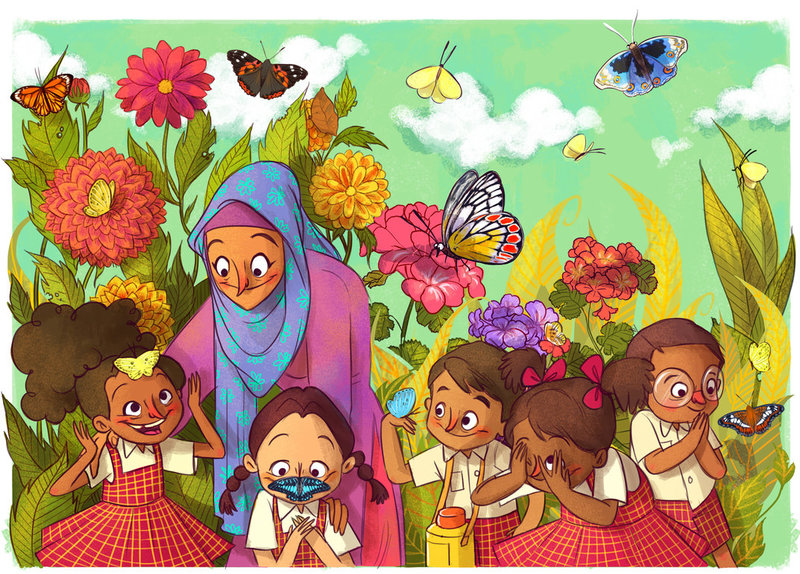
Widening the imagination – What better way to talk about this than directing you to How Far is Far? A book about distances, big numbers and measurement, Sukanya Sinha and Vishnu M Nair have created an exceptional math book which stays true to the core ideas of math: play and exploration.
Memorable characters – Being able to create characters that stick in our memory is an admirable skill. Including memorable characters naturally makes it easier for children to retain the concept and story. In that regard, some of our favourite characters are: the quirky grandmother from How Old is Muttajj? (by Roopa Pai & Kaveri Gopalakrishnan), the endearing gharial from Ghum-Ghum Gharial's Glorious Adventure (by Aparna Kapur & Roshan K), adventurous Arya from Arya in the Cockpit (by Nandita Jayaraj & Upamanyu Bhattacharyya) and the perpetually hungry Neema from Bijal Vachharajani and Priya Kuriyan's What's Neema Eating Today?.
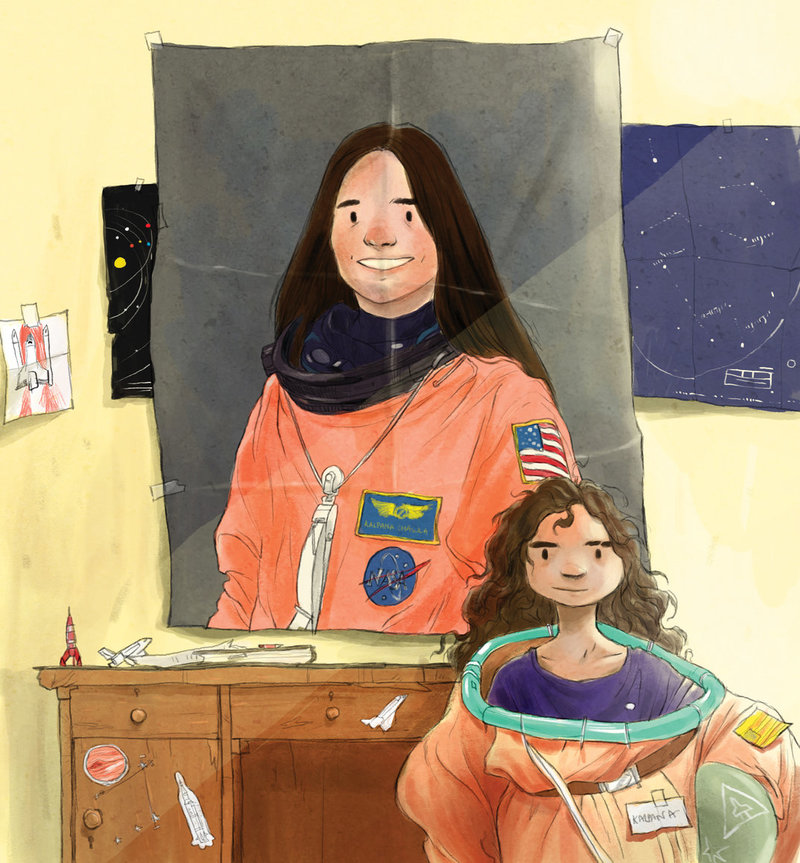
Reinforcing the concept through activities – In the case of STEM books, it’s very helpful to have fun, practical activities at the end of the book. Children seem to enjoy this as it allows them to engage with the concept in a real way and not be passive consumers of information. A Butterfly Smile has a really fun activity at the end of the story. We’ve been told by teachers that How Old is Muttajji? was well received because children enjoyed the interactive nature of the narrative which challenged them to think, much like solving a puzzle.
Pure non-fiction – Although we haven’t done much in terms of straightforward non-fiction, we are beginning to see the massive potential of this. The only reason we didn’t do much of this is for the fear of seeming ‘textbookish’. But the response to books like How Does Toothpaste Get Into the Tube? (by Veena Prasad & Rajiv Eipe) has made us realize that we should look at publishing more of these. This book has certainly done well in choosing the right question – a question that is likely to baffle us, and one that doesn’t have very obvious answers.
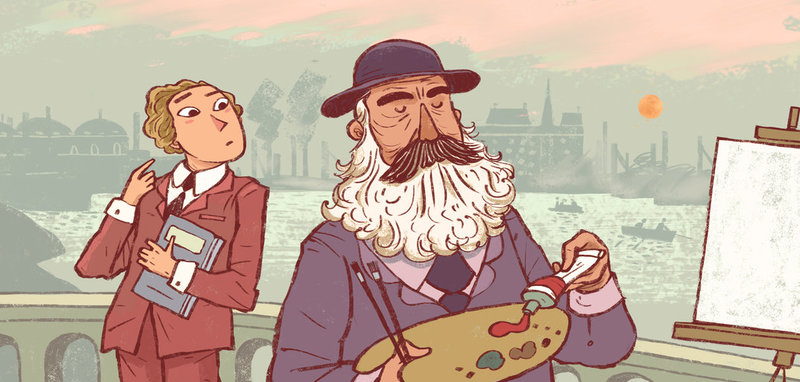
Ability to relate – Some of the stories that children have quickly taken to are the ones that they find easy to relate to. For instance, One by Two (by Maya Bisineer & Shreya Sen) which is essentially about division but involves a lot of food sharing which is familiar to most of us.
Fascinating topics – Very often, finding a theme that is of interest to children is half the battle. Of course, this is an old trick! But, it’s a useful one – especially for STEM stories. Just last year, we commissioned Gul in Space (by Richa Jha & Lavanya Karthik) and Kaakaasaurus (by Shalini Srinivasan & Prabha Mallya) because... well, space and dinosaurs!
Good for Read Aloud – We decided to include this point only because we find that a lot of our books are read aloud in schools. So it’s always wonderful to have STEM stories that are fun to read aloud. A perfect example of this is Anupama Ajinkya Apte's Gulli’s Box of Things - a STEM book we published a few years ago (in print).
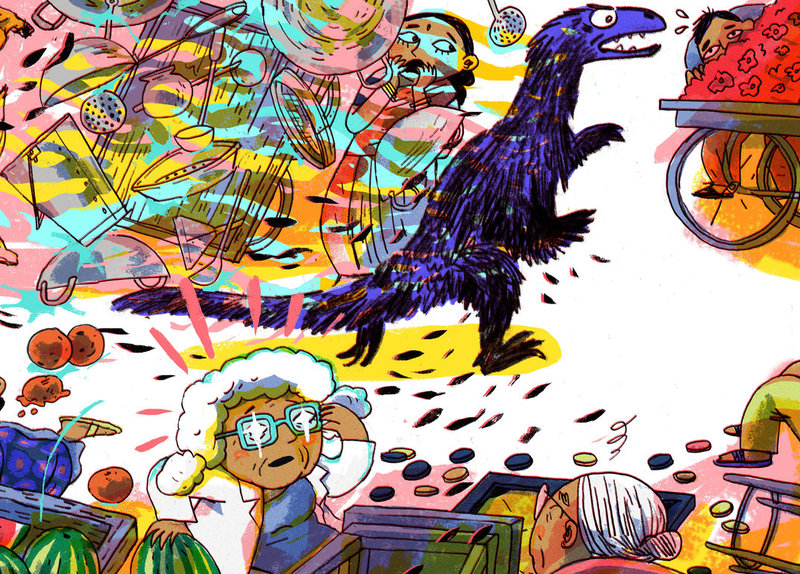
All the STEM books that are mentioned here are available for free on StoryWeaver in English, Hindi, Marathi, Kannada and Tamil.
Be the first to comment.